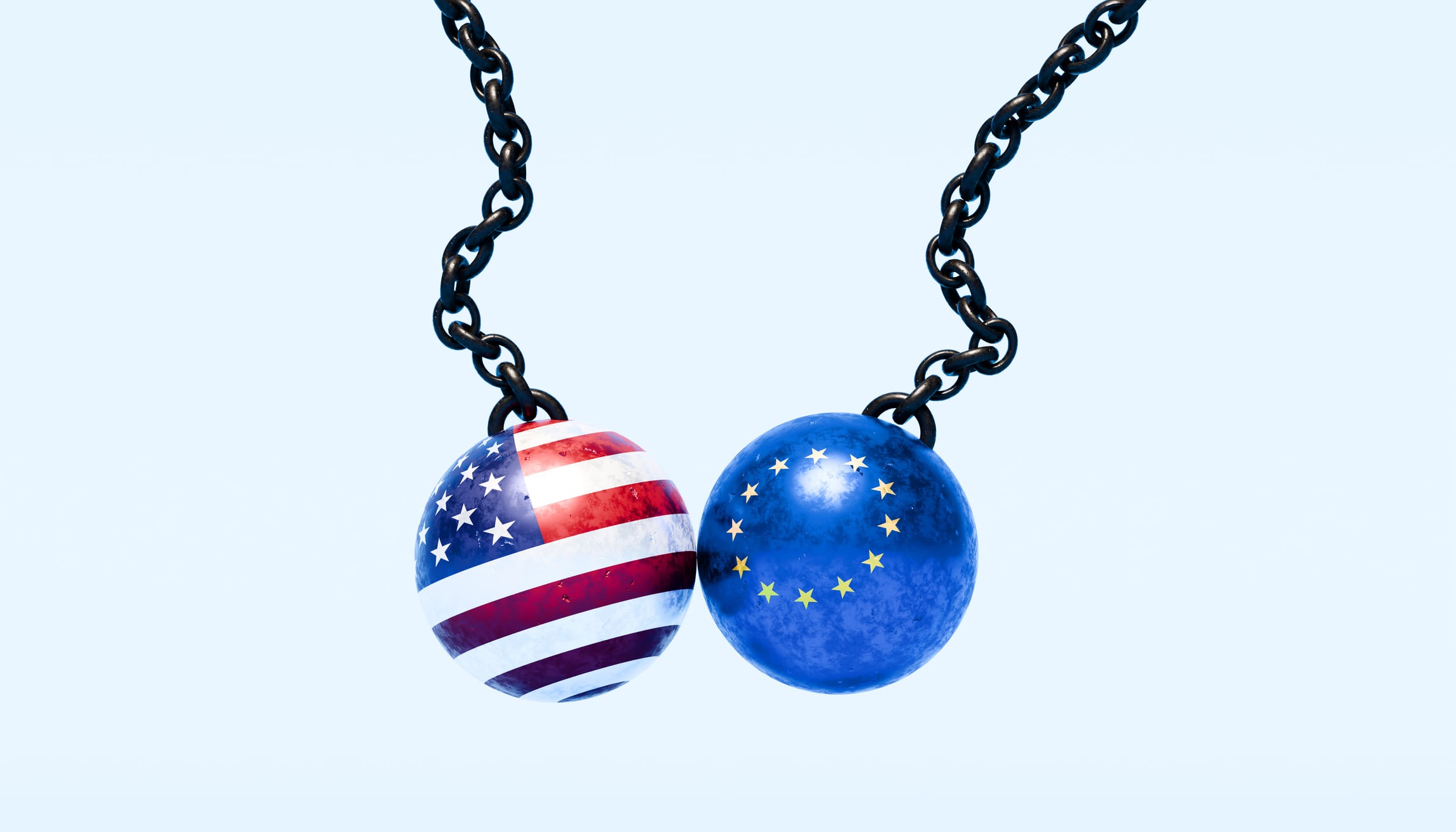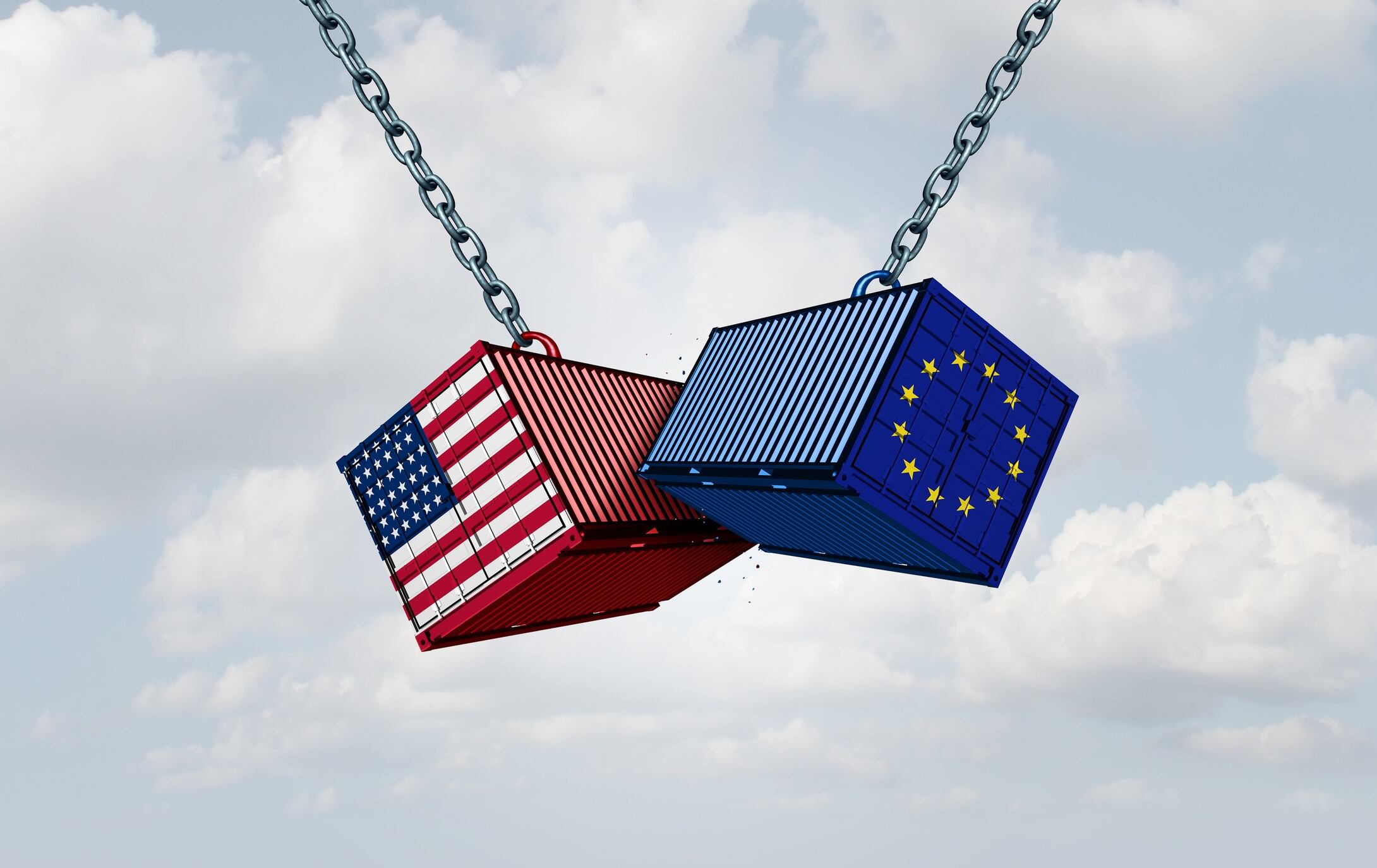Markets have heaved a sigh of relief following president Donald Trump’s 90 day tariff postponement (with the exception of China), announcement yesterday.
Before the reprieve, publicly owned food businesses such as Mondelēz remained positive, despite the market uncertainty that continues to linger. The EU will now face a 10% baseline tariff until further notice.
Last week Mondelēz International, along with Danone, Unilever and Nestlé, saw share values drop in light of Trump’s tariff announcement.
However, the business “remains confident in our ability to navigate the evolving external environment”, a Mondelēz spokesperson said.
Danone and Nestlé were also contacted, but declined to comment.
Alcohol and dairy dropped from EU retaliatory tariffs
And despite the EU announcing it would drop retaliatory tariffs against the US on dairy, bourbon and wine, there is still little for food and drink to be positive about in the long term.
The EU’s decision to drop these tariffs followed heavy lobbying from Ireland, Italy and France to shield their own alcohol industries against Trump’s threat of additional 200% tariffs on wine and champagne, the FT reports.
However, the EU’s 25% tariffs against the States for a host of other goods was set to come into effect between April 15 and December 1, with taxes on soybean and almond imports delayed until December 1.
Though the European Commission is yet to provide an update following Trump’s 90 day break.
“200% doesn’t seem likely now EU has decided to don’t put any tariffs on US spirits and wine,” explains Thijs Geijer, Senior Sector Economist covering the Food and Agriculture sector at ING.
While there has been some EU backtracking, the bloc’s alcoholic beverage industry will still feel the sting of Trump’s tariffs if or when the come into force, explains Adam Butlin, a research assistant for the Centre of Economic Performance at the London School of Economics (LSE).
“Exporters from wine-producing regions in France, Italy, and Spain are especially vulnerable, as their producers rely heavily on American consumers,” he says.
What products are less vulnerable to tariffs?
Contrasting with the vulnerability of alcohol, some food and beverage sectors are significantly less likely to be hit hard by tariffs.
Consumer staples such as preserved food, cereals and household pantry items are safer from the effects of tariffs, explains Butlin, as they have both consistent demand and broader product diversification, making them less vulnerable to price shifts from trade policy.
Products with a lower elasticity of demand and a limited domestic substitution in the US will be better off, Butlin explains.
“The most resilient producers will be those with flexible supply chains and diversified export destinations, enabling them to adapt to new trading conditions with minimal disruption.”
Food businesses may shift to emerging economies
In the long-term, what could tariffs mean for European food and beverage?
With tariffs making the US a less attractive market for multinational producers, they make seek out alternative markets, such as emerging economies with expanding middle classes.
“China and India are particularly attractive alternatives due to their rapid urbanisation, growing consumer spending, and rising appetite for premium food and drink products,” explains Butlin. India in particular is often viewed as a holy grail for food and drink majors such as Unilever and Mondelēz.
By 2030, these two countries will account for 66% of the world’s middle class population, and 59% of its middle class consumption.
Canada, Mexico and Southeast Asia may also be candidates, suggests ING’s Geijer. The Mercosur free trade agreement may also make South American markets such as Brazil and Argentina more accessible.
Food and beverage no longer hedge against uncertainty
Food and beverage stocks, meanwhile, may have lost their shine.
Traditionally, explains Butlin, food and beverage stocks have been seen as defensive assets, compared with more volatile industries, because of their more stable demand. In this case, though, such trends are not baring out.
“In recent cycles, food-related equities have not consistently outperformed the broader market during periods of tariff escalation. Their recovery is therefore likely to mirror overall market sentiment, rather than lead it, especially in the absence of a predictable and rules-based trade environment.”
Factors leading to this new level of vulnerability include decreased export competitiveness and cost inflation.




